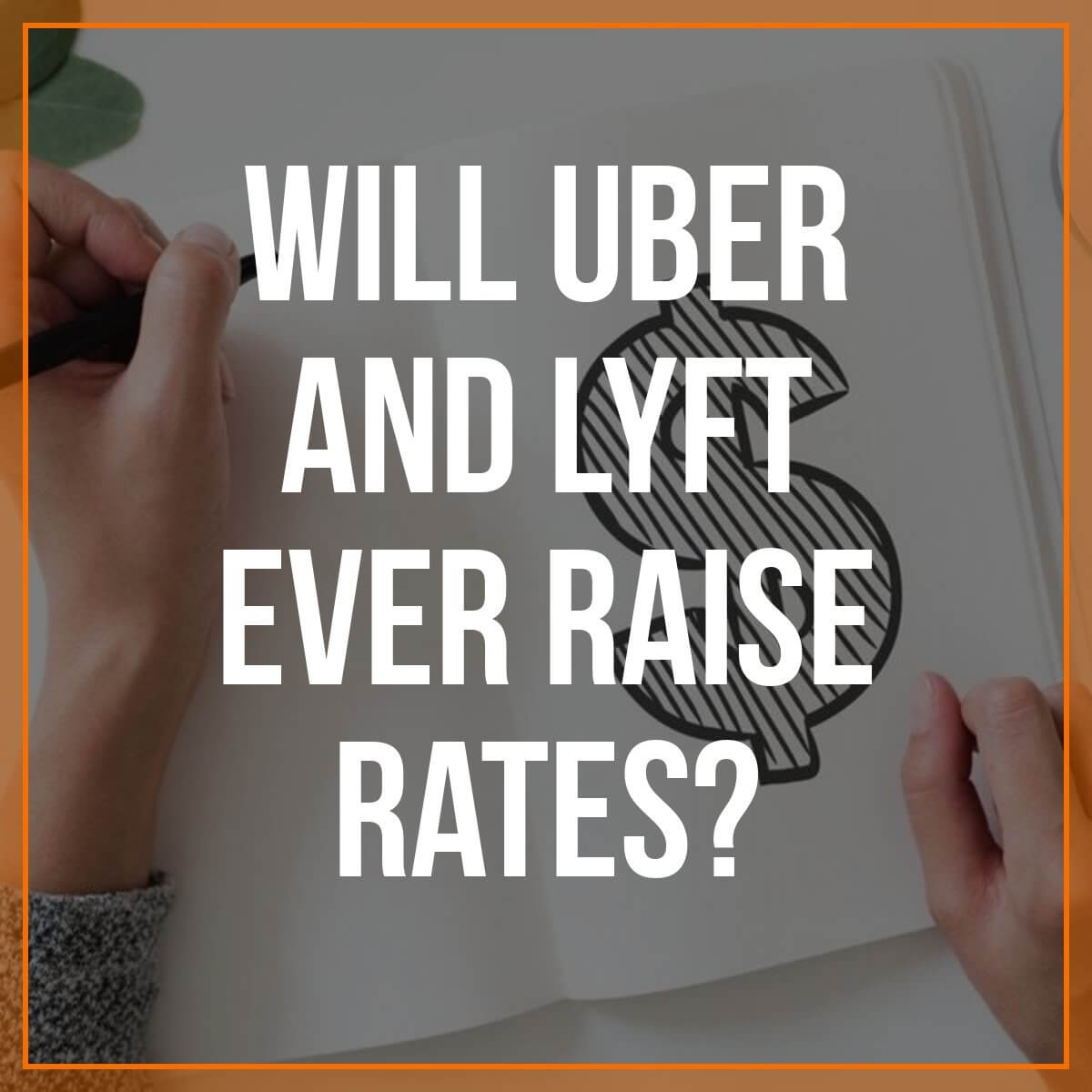Ever wondered why Lyft rates seem to fluctuate so much? It's like trying to solve a puzzle, but don't worry, we've got you covered. Whether you're a regular rider or just curious about how Lyft pricing works, this article will break it all down for you. Understanding Lyft rates can save you money and make your rides more predictable. So, buckle up and let's dive in!
Let's face it, Lyft has become a staple in our daily lives. From late-night rides home to airport trips, Lyft rates play a significant role in determining how much you'll spend. But here's the thing—those rates aren't set in stone. They depend on a bunch of factors, and once you know what they are, you'll be better equipped to plan your rides.
In this article, we'll explore everything you need to know about Lyft rates. We'll cover the basics, delve into the factors that influence pricing, and even share some insider tips to help you save money. So, if you're ready to unravel the mysteries of Lyft pricing, keep reading!
- Taron Egerton Siblings Unveiling The Family Dynamics Of The Golden Globe Winner
- Riley Reid News The Latest Updates And Buzz Surrounding The Adult Industryrsquos Favorite Star
Understanding Lyft Rates: The Basics
Before we dive into the nitty-gritty, let's start with the basics. Lyft rates are determined by a combination of factors, including distance, time, demand, and additional fees. While it may seem straightforward, there's more to it than meets the eye.
For instance, base fares vary depending on your location. Some cities have higher starting rates, while others are more affordable. This means that a ride in New York City might cost you more than one in a smaller town. Keep this in mind when budgeting for your next trip.
How Lyft Calculates Rates
Lyft uses a dynamic pricing model, which means rates can change based on supply and demand. Here's how it works:
- Stacy Van Dyke Obituary A Tribute To A Remarkable Life
- Des Moines Jail Score The Inside Scoop You Need To Know
- Base Fare: This is the initial cost of your ride, which covers the driver's time and vehicle usage.
- Distance and Time: Lyft charges per mile and per minute, so longer rides or rides in heavy traffic will cost more.
- Prime Time: When demand is high, Lyft applies a surge pricing multiplier, which can increase your fare significantly.
- Additional Fees: These may include airport fees, tolls, or service charges, depending on your route.
Understanding these components can help you anticipate how much your ride will cost. It's like knowing the rules of the game before you play!
Factors That Influence Lyft Rates
Now that we've covered the basics, let's explore the factors that influence Lyft rates. These elements can make or break your budget, so it's essential to understand them.
Time of Day
Lyft rates tend to spike during peak hours, such as weekday rush hours and weekends. If you're planning a ride during these times, expect to pay more. Conversely, rides during off-peak hours, like early mornings or late nights, are usually more affordable.
Location
Your location plays a significant role in determining Lyft rates. Urban areas with high demand often have higher base fares compared to suburban or rural areas. Additionally, rides to and from airports or tourist destinations may come with additional fees.
Supply and Demand
Lyft's dynamic pricing model ensures that rates adjust based on supply and demand. When there are more riders than drivers, prices go up. Conversely, when there are plenty of drivers available, prices tend to drop. This system helps balance the market and ensures that both riders and drivers are satisfied.
Lyft Rates vs. Competitors
When it comes to ride-sharing services, Lyft isn't the only player in town. Uber, for example, offers similar services and pricing structures. So, how do Lyft rates stack up against their competitors?
While both companies use dynamic pricing, Lyft often offers lower base fares in certain areas. However, this can vary depending on the city and time of day. It's always a good idea to compare prices before booking a ride.
Tips for Saving on Lyft Rates
Who doesn't love saving money? Here are a few tips to help you get the best Lyft rates:
- Schedule Your Ride: Booking a ride in advance can help you avoid surge pricing.
- Use Promo Codes: Keep an eye out for discounts and promo codes, especially if you're a new user.
- Travel During Off-Peak Hours: Planning your ride during less busy times can save you a bundle.
- Consider Shared Rides: Lyft's Shared Rides option can reduce your fare by splitting costs with other passengers.
By implementing these strategies, you can make your Lyft rides more budget-friendly without sacrificing convenience.
Lyft Rates: A Breakdown of Costs
Let's break down the costs associated with Lyft rates. This will give you a clearer picture of what you're paying for and how it all adds up.
Base Fare
The base fare is the minimum amount you'll pay for a Lyft ride. It covers the driver's time and vehicle usage. Depending on your location, this can range from $2 to $5 or more.
Per Mile and Per Minute Charges
Lyft charges per mile and per minute, so the longer your ride, the more you'll pay. These charges vary by city, but you can expect to pay around $1-$2 per mile and $0.20-$0.40 per minute.
Prime Time Pricing
When demand is high, Lyft applies a Prime Time multiplier to your fare. This can increase your cost by up to 2.5x or more. While it may seem steep, it ensures that drivers are incentivized to work during busy times.
Lyft Rates: Additional Fees and Charges
Aside from the base fare and per-mile charges, there are other fees that can affect your Lyft rates. Let's take a look at some of the most common ones:
Airport Fees
Rides to and from airports often come with additional fees. These fees cover the cost of accessing airport facilities and parking. Be sure to factor this into your budget when planning an airport trip.
Tolls
If your route includes toll roads, expect to pay an additional charge. Lyft typically passes these costs directly to the rider, so be prepared for a slightly higher fare.
Service Fees
Lyft charges a service fee on every ride, which helps cover operational costs. This fee is usually a percentage of your total fare and is included in the final price.
Lyft Rates: The Impact of Surge Pricing
Surge pricing, or Prime Time as Lyft calls it, is one of the most significant factors affecting Lyft rates. When demand outstrips supply, prices go up to encourage more drivers to hit the road. While it can be frustrating for riders, it's a necessary part of the dynamic pricing model.
How to Avoid Surge Pricing
Here are a few tips to help you avoid surge pricing:
- Travel During Off-Peak Hours: As we mentioned earlier, riding during less busy times can help you avoid surge pricing.
- Use Lyft's Estimated Fare Feature: This feature allows you to see potential surge pricing before booking your ride.
- Consider Alternative Routes: Sometimes, taking a slightly longer route can help you avoid areas with high demand.
By being strategic about when and where you ride, you can minimize the impact of surge pricing on your Lyft rates.
Lyft Rates: The Role of Driver Incentives
Lyft's pricing model isn't just about maximizing profits—it's also about incentivizing drivers. By offering higher rates during peak times, Lyft ensures that there are enough drivers available to meet demand. This benefits both riders and drivers, as it creates a more balanced market.
How Driver Incentives Affect Rates
Driver incentives, such as bonuses and promotions, can also impact Lyft rates. These incentives encourage drivers to work during busy times, which helps keep prices stable. While it may seem counterintuitive, these programs ultimately benefit riders by ensuring there are enough drivers on the road.
Lyft Rates: The Future of Pricing
As technology continues to evolve, so does Lyft's pricing model. The company is constantly exploring new ways to make rides more affordable and predictable for users. From AI-driven algorithms to real-time data analysis, the future of Lyft rates looks promising.
What to Expect
In the coming years, we can expect Lyft to introduce even more advanced pricing strategies. These may include personalized rates based on user behavior, real-time adjustments based on traffic conditions, and even subscription models for frequent riders.
Conclusion: Mastering Lyft Rates
Understanding Lyft rates is key to making the most of your ride-sharing experience. By knowing the factors that influence pricing and implementing strategies to save money, you can ensure that your rides are both convenient and affordable.
So, the next time you're planning a ride, take a moment to consider the factors we've discussed. Whether you're traveling during off-peak hours, using promo codes, or opting for shared rides, there are plenty of ways to get the best Lyft rates.
Don't forget to share this article with your friends and family, and let us know in the comments if you have any tips of your own. Together, we can make ride-sharing more affordable and enjoyable for everyone!
Table of Contents
- Understanding Lyft Rates: The Basics
- Factors That Influence Lyft Rates
- Lyft Rates vs. Competitors
- Tips for Saving on Lyft Rates
- Lyft Rates: A Breakdown of Costs
- Lyft Rates: Additional Fees and Charges
- Lyft Rates: The Impact of Surge Pricing
- Lyft Rates: The Role of Driver Incentives
- Lyft Rates: The Future of Pricing
- Conclusion: Mastering Lyft Rates
- Is Ryan Reynolds A Twin Unveiling The Truth About Hollywoods Favorite Canadian
- Pics Of Jessica Caban A Deep Dive Into Her Journey And Iconic Moments


